Duane Linklater and Brian Jungen’s film makes a bold statement, capturing a traditional practice in the shadow of Canada’s booming oil and gas industry.

Colin McConnell
/ Toronto Star
Order this photo
Brian Jungen, left, and Duane Linklater, two of Canada s most
prominent First Nation contemporary artists, have collabrated on a video
called Modest Livelihood, on now at the AGO.
In a huge, otherwise-empty gallery at the Art Gallery of Ontario,
Duane Linklater and Brian Jungen are flaying the still-warm carcass of a
freshly killed yearling moose calf, steam billowing from its upended
rib cage, still full of wet crimson meat.
That this is happening
onscreen — of course — and not directly in front of you mediates the
intensity, though not entirely, and this is surely part of the point.
Jungen and Linklater, both First Nations artists, both riding
international careers, both tied to their respective tribal lands, set
out to capture an unvarnished representation of daily life when they’re
not rubbing shoulders with the art world cognoscenti at museums and art
fairs. Mission accomplished.
“We wanted to show people it’s not a heroic endeavour,” says Linklater, who is Omaskeko Cree from Moose Cree First Nation in Northern Ontario. Jungen nods.
“It’s a
family thing,” he says. “I think for most Indian folks, hunting is
really just going hiking, but with rifles.” It opened Saturday.
Linklater, 36, won the Sobey Art Award earlier this month, likely Canada’s most prominent contemporary art prize, given each year to an artist under 40.
Jungen, 43, who won the first Sobey
in 2002, is among the country’s best-known artists here and abroad,
having built his considerable fame on his sculptural works that have
typically plied a cheeky hybridization of Indian and contemporary
culture, to both amusing and unsettling effect.
Linklater
made a mark with a practice that’s collaborative and open-ended, built
on gesture and process more than making things, and his influence here
is clear, and strong. But there’s a mutual truth to be told here, and
the duo had a strong affinity in telling it.
The film is called Modest Livelihood,
and its 50 minutes have a decidedly homely quality. The artists trudge
stoically through bush and across alpine fields, scanning the near
distance for signs of their quarry. The final scene notwithstanding, Modest Livelihood
is languid and broadly peaceful, punctuated with brief, infrequent
spurts of ominous anticipation. It’s a quotidian ritual of shared
experience; even the butchering of the moose is practical, useful,
matter-of-fact. (“We were always talking, about music, art, culture,”
Jungen said. “We thought we’d transfer the conversation to something
else we shared.”)
For all its plainspoken, documentary quality, there are powerful undertones . Modest Livelihood
takes its title from a 1999 Supreme Court decision to allow Donald
Marshall, a Mi’kmaq Indian in Nova Scotia, to sell eels he had caught
without a permit under an 18th-century treaty between the crown and his
band.
The decision, however,
stipulated limits: Marshall could only sell enough to constitute a
“moderate livelihood” (“moderate” became “modest” for the piece; the
artist felt it more loaded). That ambiguous term was precedent-setting,
and became a benchmark for resource management among First Nations.
In Jungen’s home turf of Treaty 8
in Alberta, it takes on heavy freight. “If Treaty 8 were a country, it
would be rich,” Jungen says, smiling slyly. In the film, Jungen and
Linklater quicken their steps along a gravel road carving its way
through the bush, and the camera shakes and blurs as they break into a
run past a huge compressor pump that serves a pipeline running through
the wilderness.
As they practice their
“modest livelihood,” all around, famously immoderate oil and gas
conglomerates siphon Jungen’s treaty territory. The government that
administrates it, of course, is the same one that granted treaty rights
to Indians for such things as hunting, here and across the country.
In this uncomfortable
intersection lies an explosive disconnect. Linklater, whose territory
includes rich veins of diamonds and gold, and decades’ worth of mining
to extract it, nods knowingly.
“We both thought that
limitation, in terms of the court’s decision, was extremely problematic,
in terms of the context of capitalism, where there seems to be no limit
to what you can accumulate in terms of wealth,” he says.
Onscreen, in close
sight of the compressor pump, Jungen and Linklater skin the moose calf,
gently removing its hide, methodically carving the meat into legs,
shoulders and entrails as the snow turns a deep, furious purple. When
they’re finished, they fold the skin and roll it neatly, to be tanned
for later use.
Jungen says when the
film was shown in Vancouver, it was seen as fiery, “a proclamation,” he
says. “People couldn’t watch it. It was too much.”
Linklater demurs.
“Ultimately, it’s about self-determination,” he says. “We knew what we
wanted to do with the moose, and we had control over that.” Over
anything else, treaty or not, is the eternal question, and Modest Livelihood asks it as well as any.
Modest Livelihood continues at the AGO to June 15.
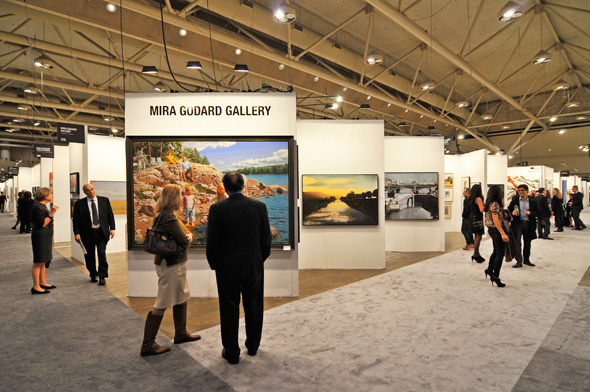 Art Toronto 2013 opened today at the
Art Toronto 2013 opened today at the 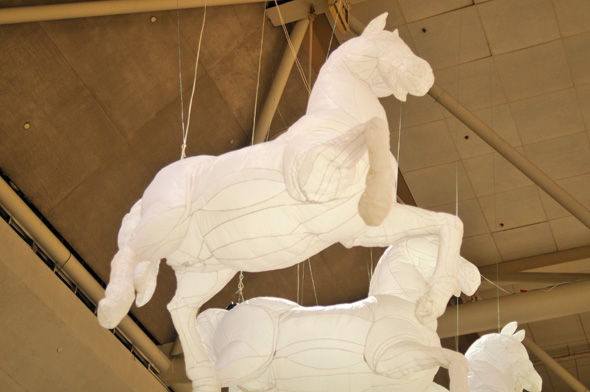 The fun percent
The fun percent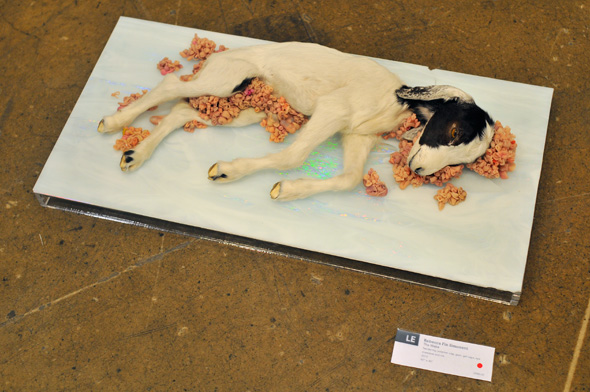 The actual art
The actual art Get your start as a collector
Get your start as a collector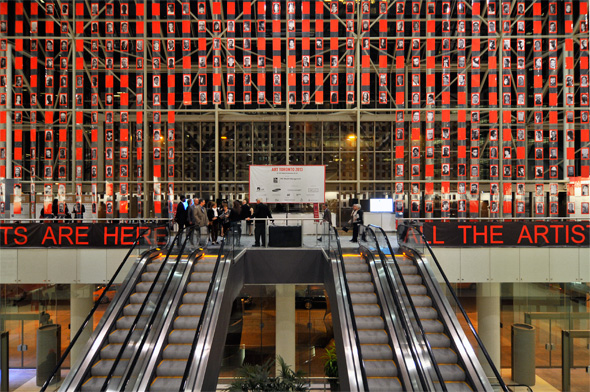 Save yourself some walking
Save yourself some walking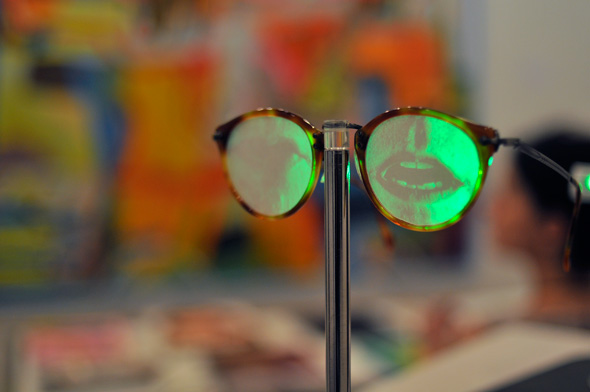 Realize that art is really weird
Realize that art is really weird